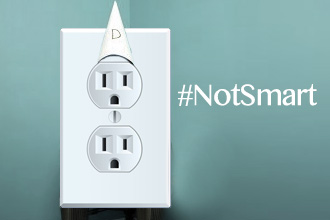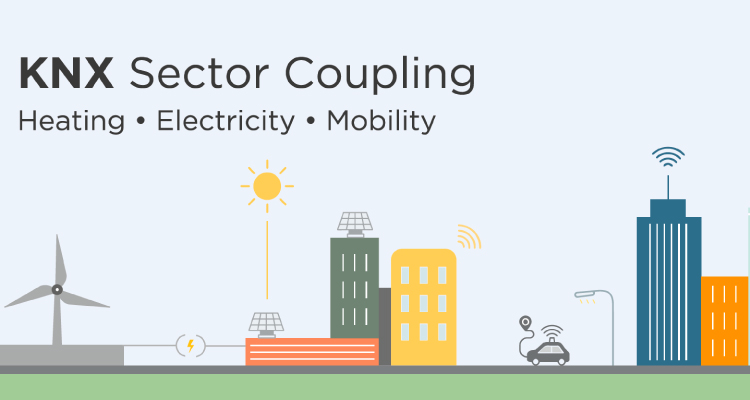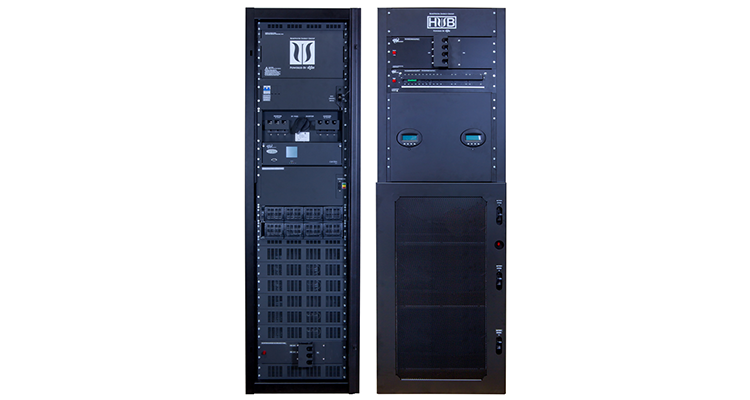So Close! Why True “Smart” Residential Power Management Needs to Happen

Last week I received a press release from BlackWire Designs about its new SafePlug Smart Energy Electrical Load Controller. My high hopes came crashing down through the floor as I realized it was just one more broken smart power solution to be tossed onto the slag heap along with: Belkin Wemo, BlueBolt, ube (remember them?), SurgeX, APC and many other smaller companies in the home power market space. Even large power companies like Duke Energy are offering free smart meters that use pattern reading heuristics to guess how power is being used in your house and offering carrot/stick incentives to change consumption times and behavior.
Each holds an element of the total system, but not the entire checklist. I’m actually unsure why a system install product that I think the market needs does not exist. I’m sure a hobbyist with a couple years of spare time and a stack of Arduino processors could manage a very non-sexy version of this, but that’s not what I’m looking for either.
So, without further delay — here is the perfect home smart power management system. (Manufacturers take note — you have one year until CEDIA 2014.)
It’s about the end devices!
Most existing systems are based on each receptacle reporting to a central controller — giving measurement and on/off control for a given socket. While that’s great, these systems rely on addressing the socket — not the device plugged into it. In order to really measure and control your home, all your sockets and every major appliance needs to be part of the system. You probably have over 50 receptacles in your home, which is over 100 individual sockets. Do you seriously remember what you have plugged into every single socket in your house? Even if you meticulously label each socket and have a list in your interface – do you remember if that iron you temporarily plugged in this morning is on Bonus Room #38 or #31? Have you ever mindlessly moved a lamp to a different side of the room? Oops — you just turned off your wife’s desktop she was in the middle of using and now she’s leaving you for Steve and his awesome hair. I hate Steve.
The answer to this exists, and I’m shocked manufacturers haven’t achieved it yet: RFID tags, be it Bluetooth, NFC or any other low power RFID tag scanner. Ziptie a small, dirt-cheap RFID tag to the end of every cord you use in a house. Tag that device with its power-draw and name into the system. Plug your device into any smart receptacle and it will report a DEVICE back to your interface for control and measurement. You won’t see a list of numbered receptacles being used on the interface — you’ll see exactly what’s actually being used in the house.
BlackWire comes the closest to this in its product — receptacles that come with RFID tag readers. But those readers are being wasted on a security-like function that overrides the control system’s on/off command. BlackWire has also integrated a feature that I would like to add to my ideal smart power system: breaker-box level control. I think it would be great to be able to put a smart control between the load and the breaker. It would enable homeowners to measure circuits in the house like lights and large unmoving loads like ovens, water heaters and A/C.
How would these smart receptacles be set up? They would communicate on a network across the power lines themselves — no need for each one to be registered and set up on a user’s wireless network. This kind of low-bandwidth network communication over power has been available and working since 1997, and it removes some problems such as wireless dead-zones in parts of your house. Powering them is also, of course, easy. The system would interface with a central box that would then be connected to the user’s main network and AV control system. In a perfect world, it would be a modular element that could be switched out depending on the type of existing control system in the house (Zigbee, Crestron, Control4, URC, whatever).
The interface would provide data — lots of nicely formatted data on every smart-device (and possibly an AV control interface). Nest — the thermostat designed by some of the original talent that brought us the iPod — does a great job of this and includes even email reports to let you know how you are doing on your energy goals and putting it in context of current national averages. The data is what makes this system truly green, and not just another green marking effort. Want a report to find out exactly how much power your PS3, or even a intermittently used vacuum is consuming? What about a device you used last week for 15 minutes? No problem. This system understands devices, not anonymous receptacle numbers.
The ideal interface would also let you see in real-time exactly what devices are being used in a list and the total power draw. Each device would have on/off control, and there’s no reason that the devices couldn’t be put into controllable groups. Why not start applying conditional rules? This is where things start getting green. Eliminate 100 percent of phantom power-draw by turning off everything at the source when you’re not home (except those devices grouped into your “always on” group, of course). Want to turn off the iron you left on in the office? Just tap the iron entry and your wife’s desktop is left undisturbed. Better luck next time Steve!
Another fringe benefit that could be used to sell the systems at the manufacturer and integrator level is SAFETY. House breakers are designed as a last resort to keep your house from burning down. Given the number of electrical house-fires there are in a year, they are not fool-proof. A smart receptacle system knows EXACTLY how much power is on a circuit, and can evaluate in real-time what you’ve just decided to plug in BEFORE power is sent to the device.
Does this all sound like pie-in-the-sky dreaming? Look at the existing power management products — the technology already exist and manufacturers are SO close already. But, the longer I wait, the more I think it’s not going to happen. Would it be an engineering challenge? No doubt — but, I don’t think it’s an insurmountable one. It would also be a boon to HomeAV — and maybe even ProAV — integrators. Although installation would require a licensed electrician, it would mostly be swapping out receptacles and therefore billed time would be minimal. The only more difficult installation would be a module installed in the breaker box.
Manufacturers could go a traditional dealer route or even create franchises directly with integrators. Manufacturers could also sell licensing for integration into related home-control products and systems as a separate revenue stream. Education would be key — not just for installation skills but for the sales staff to help sell the dream. I think one reason such a system doesn’t exist yet is a marketing problem instead of a technological problem. A large-scale ad campaign and sales training would be essential. I think the potential across America is huge given the convergence of green technology and our thirst for data and infographics. The costs of a system don’t even have to be astronomical, and could be within each for middle-class consumers. It’s one more area that struggling HomeAV integration companies can use to increase their customer base and sell profitable servers and service maintenance contracts to customers who don’t necessarily want whole house audio or a dedicated home theater. Everybody wins — and I want one of these in my house, pronto. You have until CEDIA 2014. I’ll be waiting!





